Kia Niro vs Mercedes EQA – Which car suits you better?
Everyday use, family trips or long-distance drives – here’s where the differences show.
Discover whether Kia Niro or Mercedes EQA fits your lifestyle better.
Costs and Efficiency:
When it comes to price and running costs, the biggest differences usually appear. This is often where you see which car fits your budget better in the long run.
Kia Niro has a significantly advantage in terms of price – it starts at 29100 £, while the Mercedes EQA costs 44200 £. That’s a price difference of around 15103 £.
As for range, the Mercedes EQA performs clearly better – achieving up to 561 km, about 499 km more than the Kia Niro.
Engine and Performance:
Under the bonnet, it becomes clear which model is tuned for sportiness and which one takes the lead when you hit the accelerator.
When it comes to engine power, the Mercedes EQA has a evident edge – offering 292 HP compared to 180 HP. That’s roughly 112 HP more horsepower.
In acceleration from 0 to 100 km/h, the Mercedes EQA is significantly quicker – completing the sprint in 6 s, while the Kia Niro takes 9.90 s. That’s about 3.90 s faster.
In terms of top speed, the Kia Niro performs slightly better – reaching 185 km/h, while the Mercedes EQA tops out at 160 km/h. The difference is around 25 km/h.
There’s also a difference in torque: Mercedes EQA pulls significantly stronger with 520 Nm compared to 265 Nm. That’s about 255 Nm difference.
Space and Everyday Use:
Whether family car or daily driver – which one offers more room, flexibility and comfort?
Both vehicles offer seating for 5 people.
In curb weight, Kia Niro is evident lighter – 1474 kg compared to 2045 kg. The difference is around 571 kg.
In terms of boot space, the Kia Niro offers noticeable more room – 451 L compared to 340 L. That’s a difference of about 111 L.
In maximum load capacity, the Kia Niro performs slight better – up to 1445 L, which is about 125 L more than the Mercedes EQA.
When it comes to payload, Kia Niro minimal takes the win – 466 kg compared to 425 kg. That’s a difference of about 41 kg.
Who wins the race?
The Mercedes EQA proves to be wins the duel decisively and therefore becomes our DriveDuel Champion!
Mercedes EQA is the better all-rounder in this comparison.
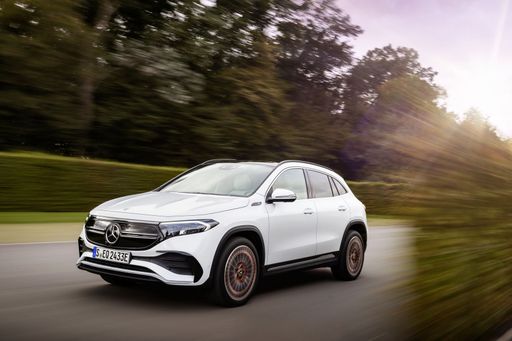
Mercedes EQA
Kia Niro
The Kia Niro presents itself as a versatile and eco-friendly SUV, blending a stylish design with advanced hybrid technology. Its spacious interior offers comfort and practicality, making it ideal for both city driving and longer journeys. With a focus on efficiency and sustainability, the Niro is a compelling choice for environmentally conscious drivers.
details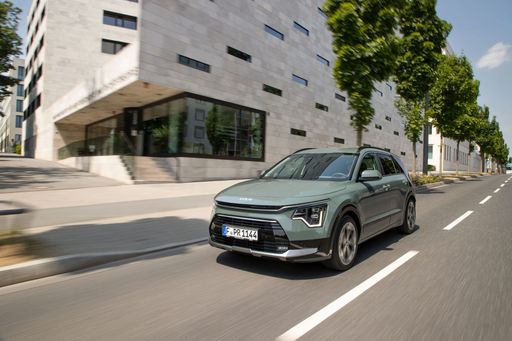 @ press.kia.com
@ press.kia.com
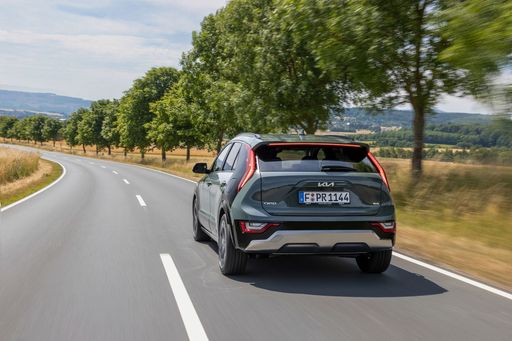 @ press.kia.com
@ press.kia.com
 @ press.kia.com
@ press.kia.com
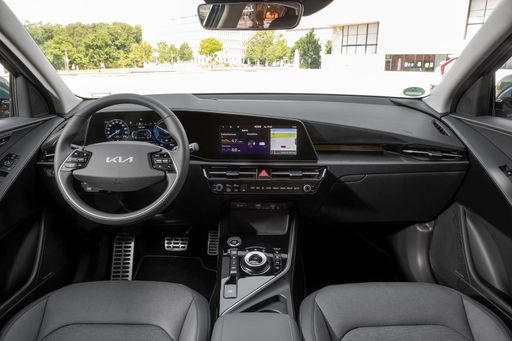 @ press.kia.com
@ press.kia.com
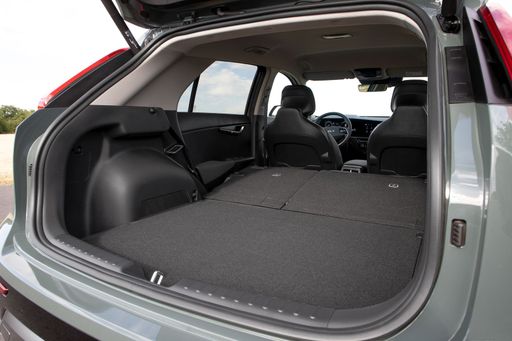 @ press.kia.com
@ press.kia.com
Mercedes EQA
The Mercedes-Benz EQA presents a refined blend of elegance and electric performance, perfectly suited for urban environments. Its sleek and modern design emphasises aerodynamic efficiency while providing a sumptuous interior that epitomises luxury and comfort. With advanced technology seamlessly integrated into its user-friendly interface, the EQA ensures a connected and enjoyable driving experience.
details @ group-media.mercedes-benz.com
@ group-media.mercedes-benz.com
 @ group-media.mercedes-benz.com
@ group-media.mercedes-benz.com
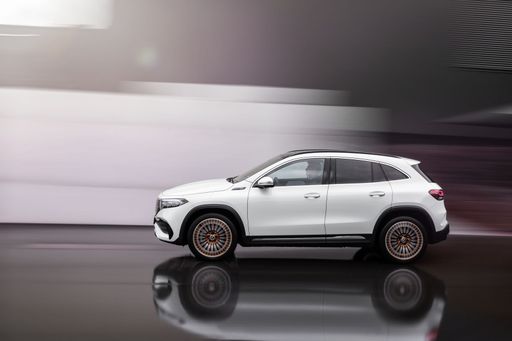 @ group-media.mercedes-benz.com
@ group-media.mercedes-benz.com
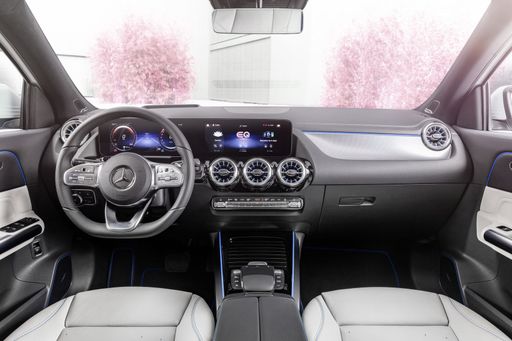 @ group-media.mercedes-benz.com
@ group-media.mercedes-benz.com

|

|
|
|
|
Costs and Consumption |
|
|---|---|
|
Price
29100 - 38600 £
|
Price
44200 - 57400 £
|
|
Consumption L/100km
2.4 - 4.9 L
|
Consumption L/100km
-
|
|
Consumption kWh/100km
-
|
Consumption kWh/100km
14.4 - 16.9 kWh
|
|
Electric Range
57 - 62 km
|
Electric Range
476 - 561 km
|
|
Battery Capacity
1.3 - 11.1 kWh
|
Battery Capacity
70.50 kWh
|
|
co2
53 - 111 g/km
|
co2
0 g/km
|
|
Fuel tank capacity
37 - 42 L
|
Fuel tank capacity
-
|
Dimensions and Body |
|
|---|---|
|
Body Type
SUV
|
Body Type
SUV
|
|
Seats
5
|
Seats
5
|
|
Doors
5
|
Doors
5
|
|
Curb weight
1474 - 1594 kg
|
Curb weight
2045 - 2115 kg
|
|
Trunk capacity
348 - 451 L
|
Trunk capacity
340 L
|
|
Length
4420 mm
|
Length
4463 mm
|
|
Width
1825 mm
|
Width
1834 mm
|
|
Height
1545 mm
|
Height
1608 - 1613 mm
|
|
Max trunk capacity
1342 - 1445 L
|
Max trunk capacity
1320 L
|
|
Payload
466 kg
|
Payload
425 kg
|
Engine and Performance |
|
|---|---|
|
Engine Type
Full Hybrid, Plugin Hybrid
|
Engine Type
Electric
|
|
Transmission
Automatic
|
Transmission
Automatic
|
|
Transmission Detail
Dual-Clutch Automatic
|
Transmission Detail
Reduction Gearbox
|
|
Drive Type
Front-Wheel Drive
|
Drive Type
Front-Wheel Drive, All-Wheel Drive
|
|
Power HP
138 - 180 HP
|
Power HP
190 - 292 HP
|
|
Acceleration 0-100km/h
9.9 - 11.4 s
|
Acceleration 0-100km/h
6 - 8.6 s
|
|
Max Speed
170 - 185 km/h
|
Max Speed
160 km/h
|
|
Torque
265 Nm
|
Torque
385 - 520 Nm
|
|
Number of Cylinders
4
|
Number of Cylinders
-
|
|
Power kW
102 - 132 kW
|
Power kW
140 - 215 kW
|
|
Engine capacity
1580 cm3
|
Engine capacity
-
|
General |
|
|---|---|
|
Model Year
2025
|
Model Year
2024 - 2025
|
|
CO2 Efficiency Class
C, B
|
CO2 Efficiency Class
A
|
|
Brand
Kia
|
Brand
Mercedes-Benz
|
Is the Kia Niro offered with different drivetrains?
The Kia Niro is available as Front-Wheel Drive.
The prices and data displayed are estimates based on German list prices and may vary by country. This information is not legally binding.
